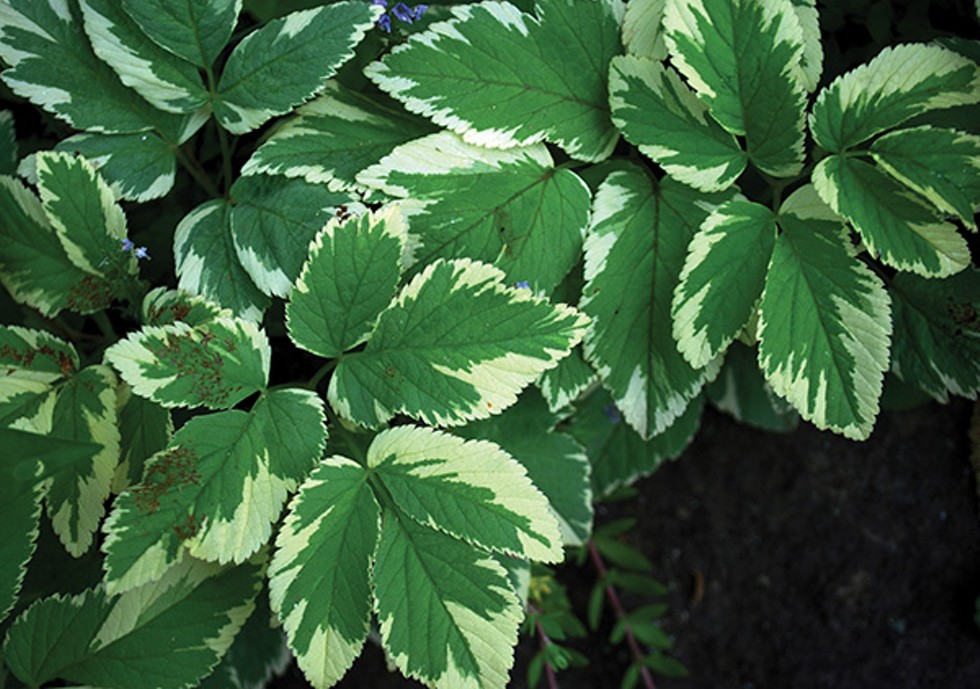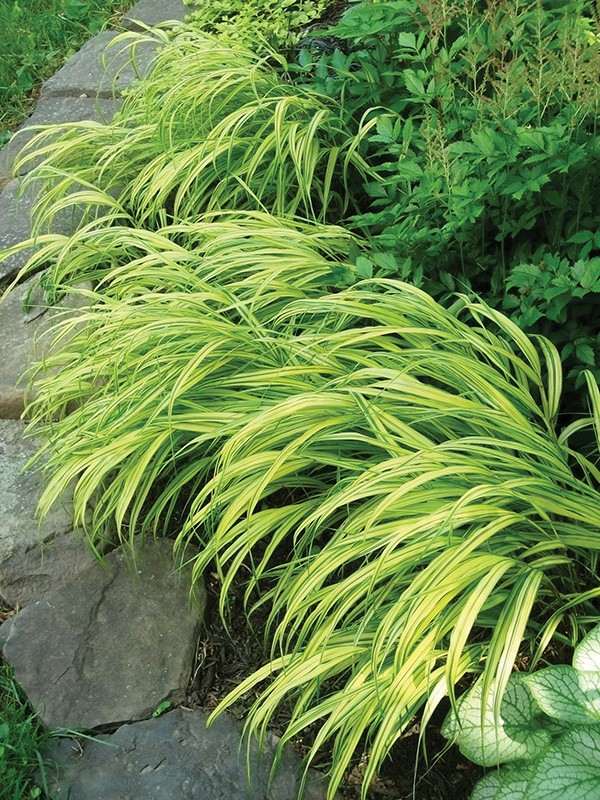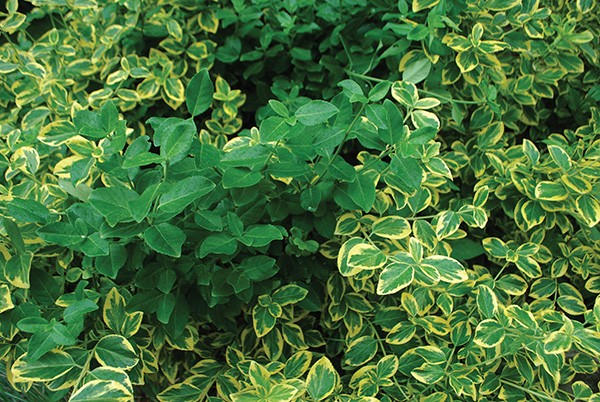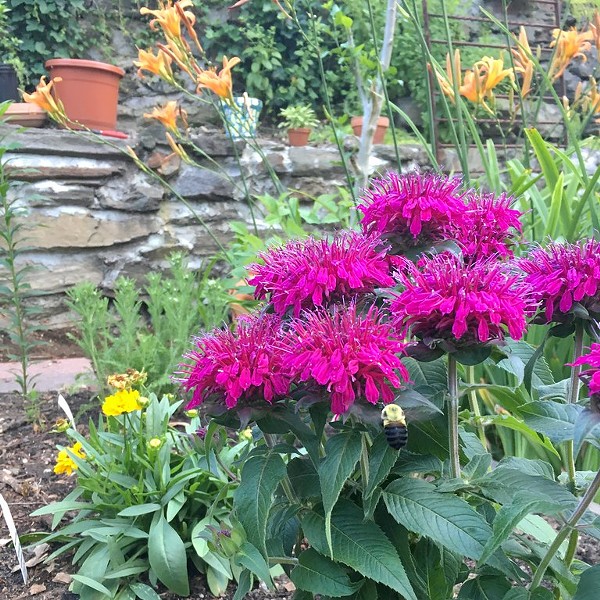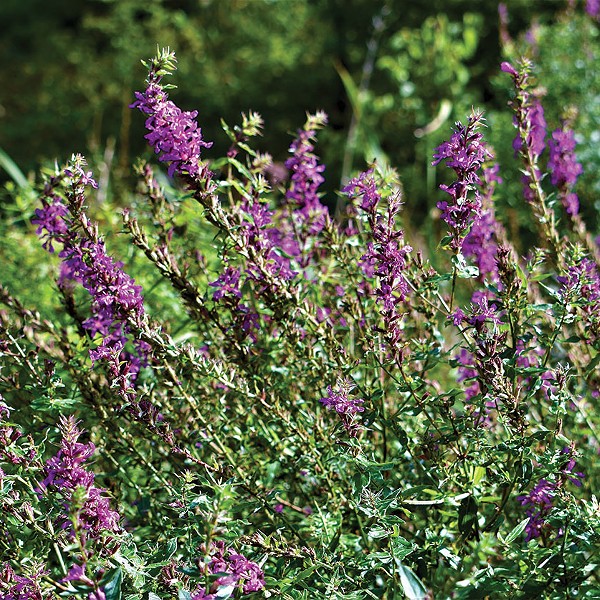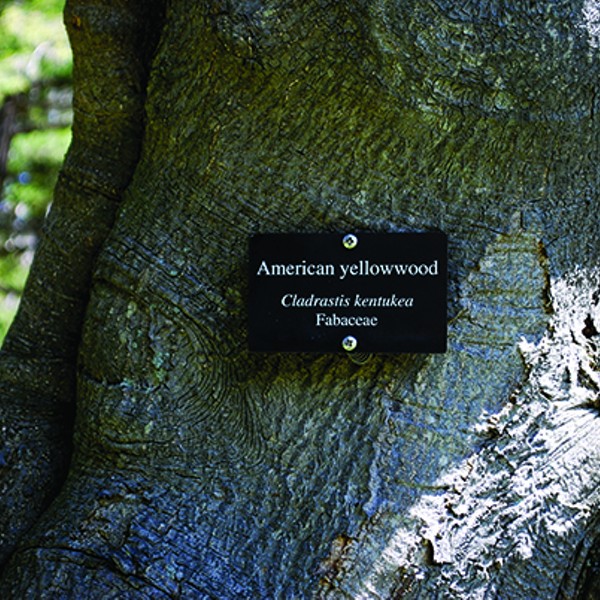Margins, streaks, dots, splashes, mottling, stripes: Variegation in plants makes them distinctive. Variegated plants are those plants that catch your eye because sections of their leaves are deficient in, or void of, chlorophyll.
While usually the variegation is white, cream, or yellow, sometimes it is pink, red, or purple if there is a strong presence of the pigment anthocyanin in the leaves. (Flowers, stems, and other plant parts, even seeds, can be variegated, but in this piece we focus on foliage.) Not everyone finds variegation pleasing; it has to be handled judiciously like a strong spice in cooking—more about how to do that later.
Natural and Assisted
Variegation can come about in several principal ways:
1. A small number of plants, like certain cacti, agave, and palms, are naturally variegated and always appear thus in nature. Their variegated status is stable and their seed can be expected to produce plants that "come true"—that is, that the progeny will reliably be variegated as well.
2. Most variegated plants are mutants that were discovered and propagated, often by leaf cuttings; they rely on human intervention to keep them going. If you try to grow one of these plants from seed, the progeny won't likely be variegated.
3. Some variegation is the result of viruses that create interesting streaks and other patterns, often without otherwise harming the plant. The "tulipomania" of 17th–century Holland was a craze for tulips whose petals were pleasingly streaked with color due to something called a mosaic virus. Plant propagators and marketers will still capitalize on otherwise innocuous viruses to get interesting-looking new cultivars onto the market.
Just a Pinch Will Do
It's not uncommon for new gardeners, who are just learning about plant disease symptoms such as yellowed foliage, to find variegated plants distasteful. A rack of multiples of the same variegated plant in a commercial setting can look like a plant sick ward.
Variegated plants shine when they are the singular oddball in a sea of more conventional leaf color. One of them goes a long way, the exception being variegated ornamental grasses like Morning Light maiden grass or zebra grass—their silvery or white stripes don't seem to preclude using them in masses. Also, variegated plants tend to be an acquired taste. I appreciate them more and more with time. Whereas flowers come and go, variegated plants give you an extra dash of color in the garden all season long.
That said, I look about my gardens and I don't have very many variegated plants ... does that make me a hypocrite? Actually, I think that's because my gardens are mostly in full sun, and I prefer to use variegated plants in the shade, where their yellow, cream, or white colors bring light to the space. In the sun, I find the variegated colors can bleach out. It's the same reason I don't use white flowers against a white house. Wherever I use variegated plants, I make sure there is dark foliage and/or a dark house or other background nearby for contrast.
I generally prefer larger-leaf variegated plants; "cutleaf" plants are already so showy by virtue of their finely cut leaves that adding variegation seems like visual overkill. Also, if the flower of a plant is very showy and held close to the leaves, jazzy leaf variegation seems like unwelcome competition for the eyes.
Caring for the Spicy
In terms of sun versus shade, what do the plants themselves prefer? The lack of chlorophyll has double-edged consequences; the chlorophyll in the green parts of the leaves needs adequate sunlight to do its job, but if the variegated parts—especially those with white tissue—get too much sun, they can burn up from lack of protective pigmentation. In general, variegated plants suffer from less vigor than their all-green counterparts. They grow more slowly and tend to be more prone to insect and slug damage.
But as to whether they prefer sun or shade, it depends on the plant. Some variegated plants with thicker leaves, like those of succulents, irises, and boxwood, fair better in full sun than do variegated plants with thinner leaves, like caladiums—but you can't generalize across the board. If a default preference had to be specified, for most variegated plants it would be sun in the morning, shade in the afternoon.
At any rate, you can expect to need to give these guys extra attention—whether it be putting diatomaceous earth around your variegated hosta to keep the slugs away, giving the plants extra good soil preparation before they go in so they are not starting out life stressed, or making sure that your variegated shrubby dogwood in the sun gets adequate mulch and water.
Another common maintenance need for variegated plants is to prune out stems that have reverted to all-green; this is especially common with variegated shrubs (see photo of 'Green and Gold' euonymus). The reverted, all-green stems have their full quotient of chlorophyll, are thus more vigorous, and if not pruned out will soon come to dominate the chlorophyll-deficient variegated stems. As you go about town on foot, notice the once-variegated shrubs that are now almost all green, with just a few remaining stems of variegated glory getting choked out.
Some Favorites—and One That Is Truly Evil
In Highland Park Arboretum in Rochester, there is a young variegated tulip tree, a memorial tree to a boy who died tragically at 13, that lives vividly in my memory of most striking plants. It has a small cream-colored splotch in the middle of most of the leaves, and the splotches vary jauntily from leaf to leaf.
In a former client's garden outside Rochester, we planted a variegated lilac shrub in a large salt-glazed pot under a pergola. Lilacs are very hardy, and the salt-glazed pot is meant to overwinter outdoors. Even though the lilac will only bloom for a short time, the interesting foliage with splashes of golden yellow make it a worthy focal point.
Variegated hakonechloa (ha-con-ah-CHLO-ah) grass is one of the most striking ornamental grasses, with its bright-green-and-gold striped leaves. It is short in stature and is one of those exceptions to the "use sparingly" rule, and indeed, one often sees it in masses. It prefers part shade and illuminates shady places like no other plant.
Toad trillium (Trillium sessile) is a part- to full-shade woodland wildflower with leaves that are mottled with patches of yellow, lighter green, or white. It's one of those naturally variegated native plants. It's considered a spring wildflower, but there's one on my property that keeps its handsome foliage for many weeks after it blooms, well into summer.
Now here's a variegated plant to avoid at all costs. It's commonly known as goutweed or bishop's weed or snow-on-the-mountain (see photo). It should be known as acid-rain-in-your-heart, because if it gets into your garden, it will run rampant and Sisyphean labors to get rid of it will ensue. The Latin name is Aegopodium podograria 'Variegatum'. There is an all-green version (Aegopodium podograria, no 'Variegatum') that is even more invasive, but when the variegated form sets seed, the new seedlings can be green. Wind can disperse that seed and cause heartache for you and your neighbors. There are so many other variegated plants that look more attractive and don't spread invasively—avoid the goutweed!
Resources
Augustine Nursery
Northern Dutchess Botanical Gardens







